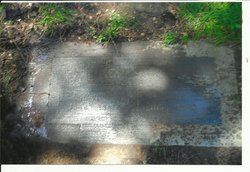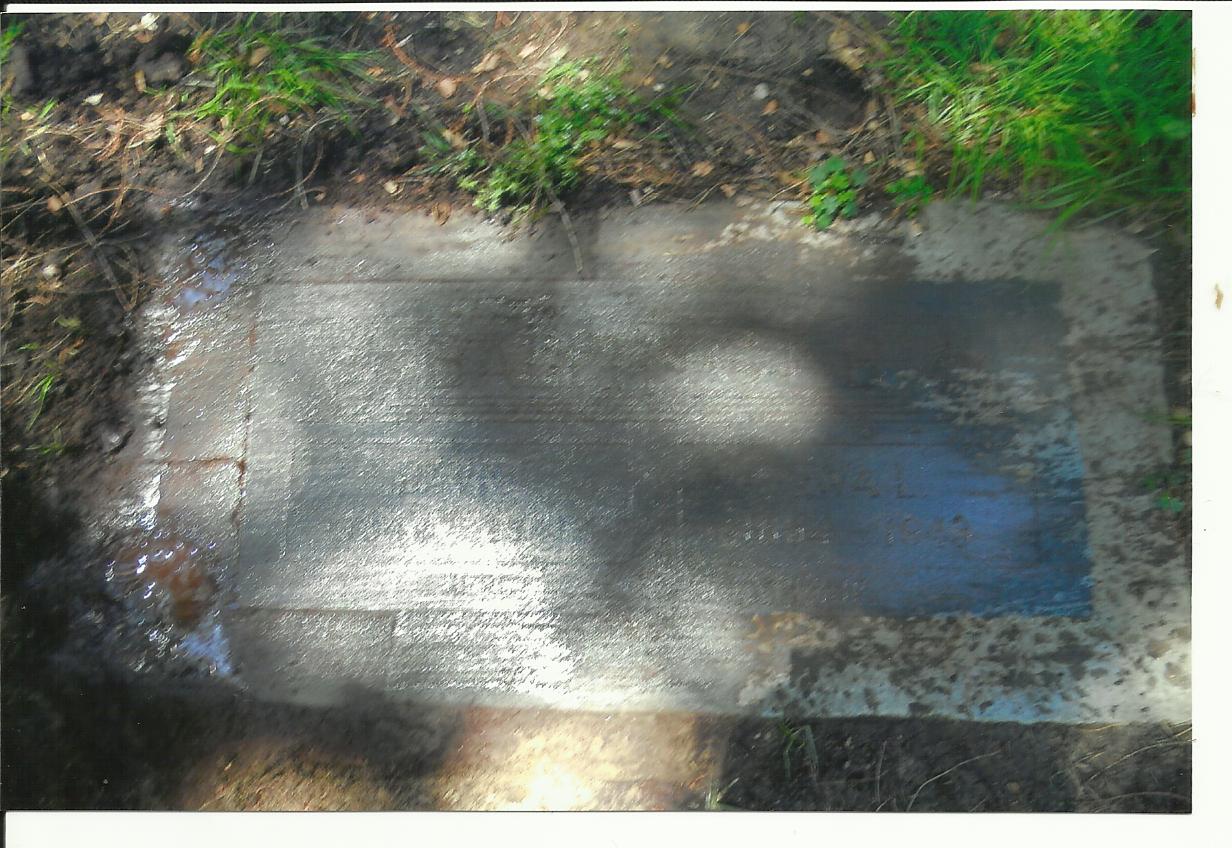.............
Civil War Union Army Soldier. He was mustered in as a Sergeant in Company H, 12th New Jersey Volunteer Infantry on August 13, 1862. Promoted to Sergeant Major of the regiment on May 1, 1865, he was the ninth of ten member of the unit to hold that rank. Mustered out on June 4, 1865, when he died in 1941 he was one of the last surviving Civil War veterans in the country.
..............
An article regarding this man was published in the Inland Daily Bulletin, Ontario, CA, today, June 25, 2013, written by Joe Blackstock. You may want to include more info under his bio from this article. I found it quite interesting. Article follows.
......................................
Pomona's Gettysburg veteran was one of the last men standing
Terrible memories must have swept through the mind of David Ballinger 75 years ago when he looked over what was once the killing fields of the Battle of Gettysburg.
Pomona's Ballinger, then 94 years old, was among two dozen surviving soldiers who fought at Gettysburg and attended the 75th anniversary of the Civil War battle in southern Pennsylvania.
"The old battlefield still looked familiar to me, but of course Gettysburg is now a good-sized town. When we were there in 1863, Gettysburg was only a village," Ballinger told the Pomona Progress-Bulletin on July 13, 1938, after returning from the event.
Monday marks the 150th anniversary of the pivotal struggle on July 1-3, 1863, that blocked the northern invasion by Gen. Robert E. Lee's army.
The war's largest battle, it brought together about 162,000 troops, with a toll of more than 46,000 dead, wounded, missing or captured. Those few aged soldiers who attended in 1938 were put up in individual tents near the battlefield, Ballinger was assisted by his daughter Bertha Sibley of Los Angeles. The ex-Union and Confederate men were housed in separate areas, but he said all the former adversaries were cordial to one another. The trip rekindled memories by Ballinger of a strategic part of the battle in which he was wounded.
His unit, the 12th New Jersey Volunteers, was on Cemetery Ridge when it faced the brunt of the infamous Pickett's Charge on the third day.
Led by Maj. Gen. George Pickett, the Confederate rush of 12,500 troops into the midst of the Union line was a bold attempt to wrest control of the battle. The charge proved a devastating defeat for the South, ultimately forcing Lee to withdraw his troops back into Virginia.
Ballinger, who was 19 during the battle, said Pickett's troops came in three waves. "Each of them was broken," according to the Progress-Bulletin story. "It was after the third line of Pickett's force was broken that Mr. Ballinger was wounded."
Shot in the left arm, he was treated and sent home to New Jersey to recover. It was not his first wound he was injured a month earlier at Chancellorsville in Virginia and he would be wounded yet again in May 1864 at the Battle of the Wilderness.
Despite multiple wounds and much time in harm's way, Ballinger survived the rigors of war and returned to his native New Jersey to work on a farm in Woodstown. Later he moved to Ypsilanti, Mich., and finally retired to Pomona about 1918.
He was very active in the Grand Army of the Republic, the organization for Union veterans. He was commander of the Ypsilanti GAR and held the same position for the last 10 years of his life with Pomona's Vicksburg GAR Post.
One of my favorite stories of Inland Valley history revolves around Ballinger.
By 1930, the number of GAR members all in their 80s and 90s was rapidly declining so Alois Podrasnik of San Antonio Heights, a former Union army officer, proposed that 12 local post members create a Last Man's Club. Members would meet yearly for dinner and toast the memory of those who had died in the previous year. Podrasnik contributed a special bottle of wine for a special toast by the last remaining man.
The group first met on Oct. 16, 1930, and got together once a year for seven years, the number at each gathering declining. Finally, in 1937, came word of Podrasnik's death, leaving Ballinger as the last man.
On Aug. 31, 1937, Ballinger was asked by a reporter about when he would make the ceremonial toast. His answer was a shock to all who knew of the club and terribly anti-climactic.
The old soldier announced firmly, "I have never drunk more than a half-pint of liquor in my 93 years," and said under no circumstances would he make the toast. Ballinger said his last taste of alcohol came in the army as part of his rations. "He feared the wine might make him act like a drunk driver," wrote the Progress-Bulletin.
I never found what became of that special bottle of wine from which that special toast was never poured.
Ballinger lived another four years before dying in Pomona at age 97 on Oct. 23, 1941 just 45 days before Pearl Harbor and the start of yet another bloody war.
Joe Blackstock writes on Inland Empire history. He can be reached at 909-483-9382, by email at joe.blackstock@ inlandnewspapers.com or Twitter @JoeBlackstock.
Courtesy of S. J. Noel Kondek
.............
Civil War Union Army Soldier. He was mustered in as a Sergeant in Company H, 12th New Jersey Volunteer Infantry on August 13, 1862. Promoted to Sergeant Major of the regiment on May 1, 1865, he was the ninth of ten member of the unit to hold that rank. Mustered out on June 4, 1865, when he died in 1941 he was one of the last surviving Civil War veterans in the country.
..............
An article regarding this man was published in the Inland Daily Bulletin, Ontario, CA, today, June 25, 2013, written by Joe Blackstock. You may want to include more info under his bio from this article. I found it quite interesting. Article follows.
......................................
Pomona's Gettysburg veteran was one of the last men standing
Terrible memories must have swept through the mind of David Ballinger 75 years ago when he looked over what was once the killing fields of the Battle of Gettysburg.
Pomona's Ballinger, then 94 years old, was among two dozen surviving soldiers who fought at Gettysburg and attended the 75th anniversary of the Civil War battle in southern Pennsylvania.
"The old battlefield still looked familiar to me, but of course Gettysburg is now a good-sized town. When we were there in 1863, Gettysburg was only a village," Ballinger told the Pomona Progress-Bulletin on July 13, 1938, after returning from the event.
Monday marks the 150th anniversary of the pivotal struggle on July 1-3, 1863, that blocked the northern invasion by Gen. Robert E. Lee's army.
The war's largest battle, it brought together about 162,000 troops, with a toll of more than 46,000 dead, wounded, missing or captured. Those few aged soldiers who attended in 1938 were put up in individual tents near the battlefield, Ballinger was assisted by his daughter Bertha Sibley of Los Angeles. The ex-Union and Confederate men were housed in separate areas, but he said all the former adversaries were cordial to one another. The trip rekindled memories by Ballinger of a strategic part of the battle in which he was wounded.
His unit, the 12th New Jersey Volunteers, was on Cemetery Ridge when it faced the brunt of the infamous Pickett's Charge on the third day.
Led by Maj. Gen. George Pickett, the Confederate rush of 12,500 troops into the midst of the Union line was a bold attempt to wrest control of the battle. The charge proved a devastating defeat for the South, ultimately forcing Lee to withdraw his troops back into Virginia.
Ballinger, who was 19 during the battle, said Pickett's troops came in three waves. "Each of them was broken," according to the Progress-Bulletin story. "It was after the third line of Pickett's force was broken that Mr. Ballinger was wounded."
Shot in the left arm, he was treated and sent home to New Jersey to recover. It was not his first wound he was injured a month earlier at Chancellorsville in Virginia and he would be wounded yet again in May 1864 at the Battle of the Wilderness.
Despite multiple wounds and much time in harm's way, Ballinger survived the rigors of war and returned to his native New Jersey to work on a farm in Woodstown. Later he moved to Ypsilanti, Mich., and finally retired to Pomona about 1918.
He was very active in the Grand Army of the Republic, the organization for Union veterans. He was commander of the Ypsilanti GAR and held the same position for the last 10 years of his life with Pomona's Vicksburg GAR Post.
One of my favorite stories of Inland Valley history revolves around Ballinger.
By 1930, the number of GAR members all in their 80s and 90s was rapidly declining so Alois Podrasnik of San Antonio Heights, a former Union army officer, proposed that 12 local post members create a Last Man's Club. Members would meet yearly for dinner and toast the memory of those who had died in the previous year. Podrasnik contributed a special bottle of wine for a special toast by the last remaining man.
The group first met on Oct. 16, 1930, and got together once a year for seven years, the number at each gathering declining. Finally, in 1937, came word of Podrasnik's death, leaving Ballinger as the last man.
On Aug. 31, 1937, Ballinger was asked by a reporter about when he would make the ceremonial toast. His answer was a shock to all who knew of the club and terribly anti-climactic.
The old soldier announced firmly, "I have never drunk more than a half-pint of liquor in my 93 years," and said under no circumstances would he make the toast. Ballinger said his last taste of alcohol came in the army as part of his rations. "He feared the wine might make him act like a drunk driver," wrote the Progress-Bulletin.
I never found what became of that special bottle of wine from which that special toast was never poured.
Ballinger lived another four years before dying in Pomona at age 97 on Oct. 23, 1941 just 45 days before Pearl Harbor and the start of yet another bloody war.
Joe Blackstock writes on Inland Empire history. He can be reached at 909-483-9382, by email at joe.blackstock@ inlandnewspapers.com or Twitter @JoeBlackstock.
Courtesy of S. J. Noel Kondek
Family Members
Sponsored by Ancestry
Advertisement
Advertisement







